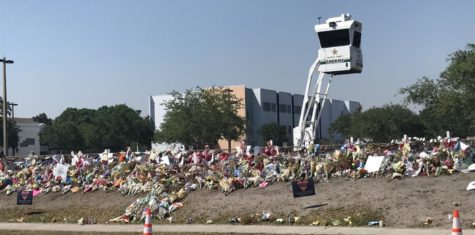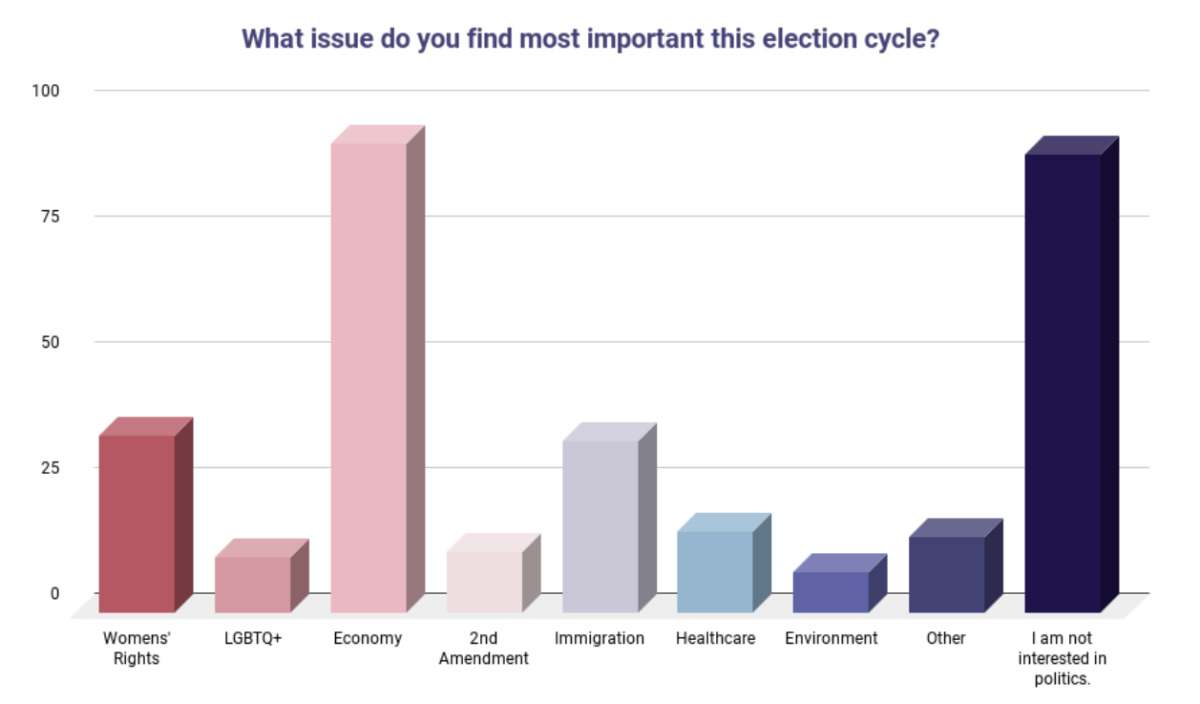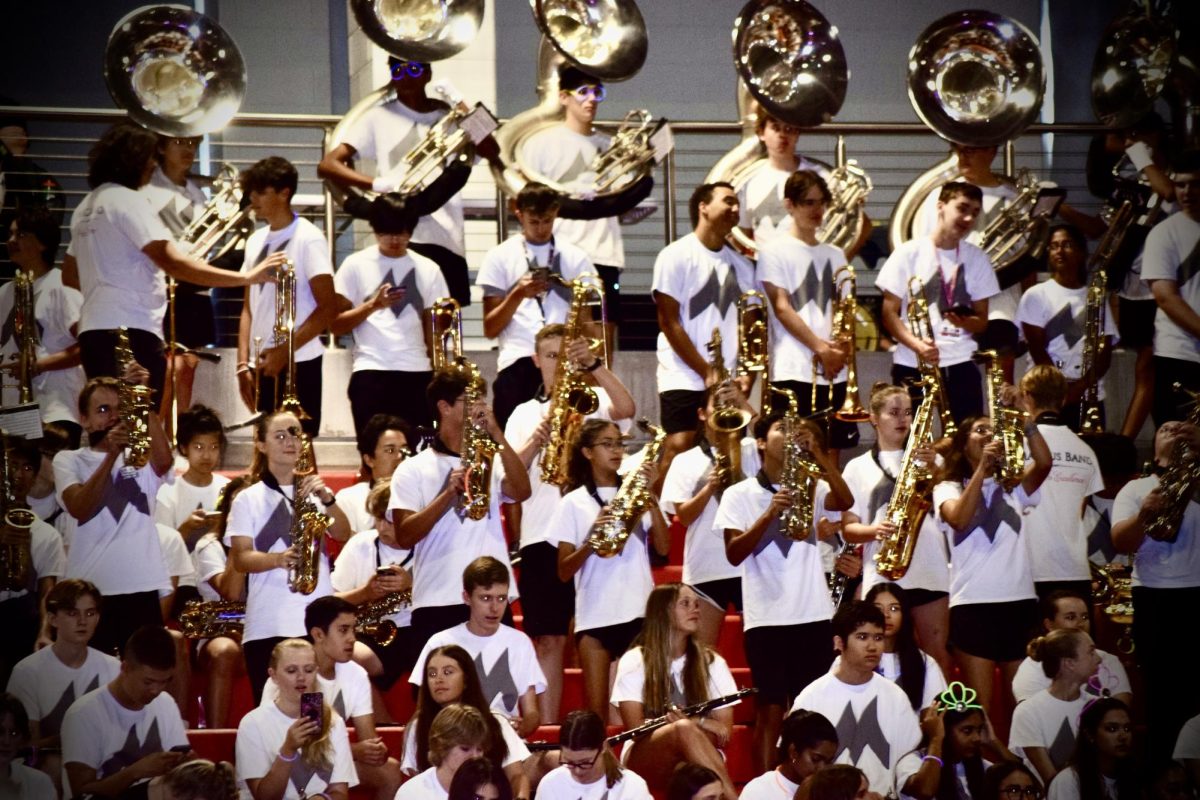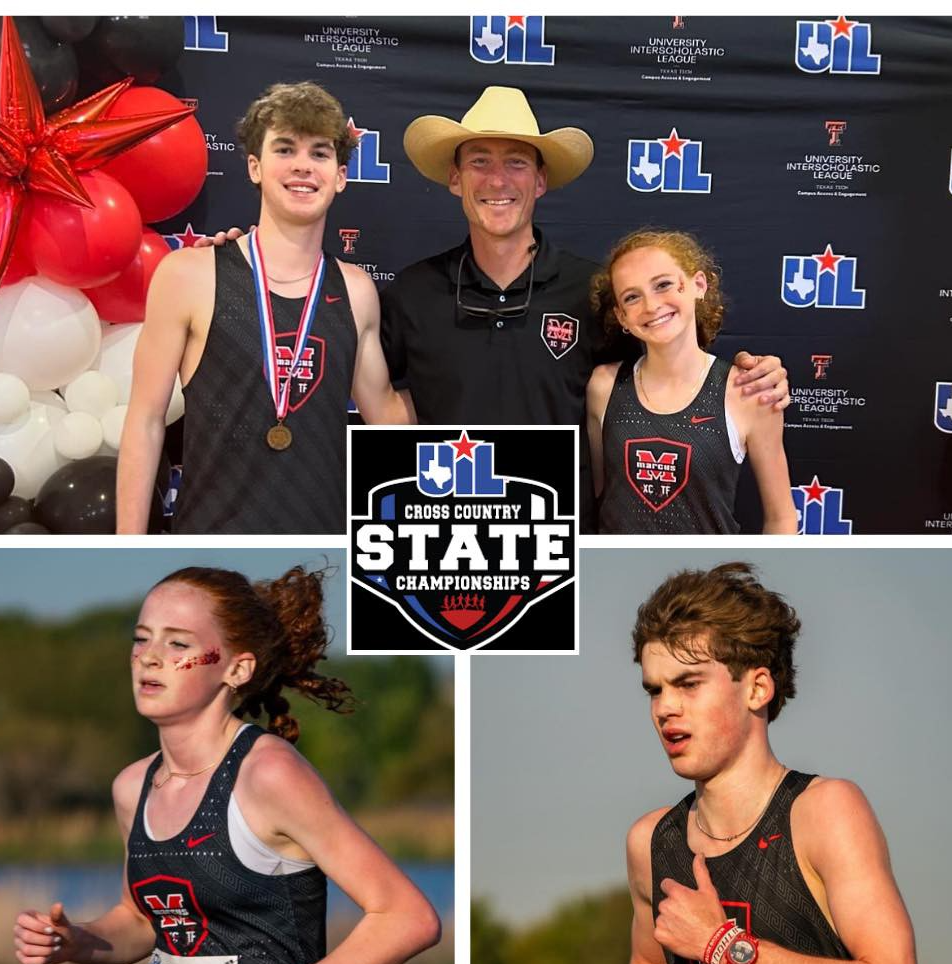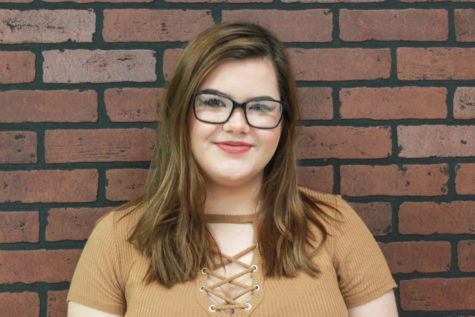Minutes before tragedy
Teddy bears and pink, heart-shaped balloons flowed through the outside commons of Marjory Stoneman Douglas High School as senior Megan Smith made her way towards her Creative Writing class. It was fourth period, her last class on Valentine’s Day.
Prior to attending the Florida school, she lived in Flower Mound and attended Lamar Middle School as a sixth-grader. There she made lifelong friends like senior Whitney McMahan, and they moved up to Marcus.
Although she was new to MSD, Smith still maintained the quiet personality people knew her by in Texas.
“The school’s so large they didn’t even know I was new,” Smith said.
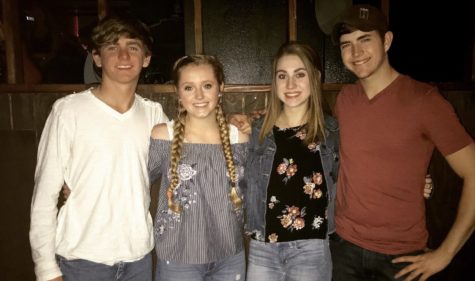
After her class in the freshman building began, her teacher played soft music and gave instruction to write “love or hate” poems for Valentine’s Day. Smith laughed and made small talk with peers around her, like her best friend Nina Kamensky and classmate Meadow Pollack.
Muffled banging disrupted their calm. Not many students heard it at first, and those who did assumed it was miscellaneous noise.
When it happened again, pens and poetry writing slowed. It wasn’t loud or quite identifiable but it seemed like something tumbling down the metal stairs a few yards away.
The music stopped as the banging occurred a third time. Inquisitive glances were spread across the room—students looked to each other with confusion and concern. Kamensky and a few others called it gunshots, but the majority remained unsure.
“I didn’t register it as gunshots because I’ve been around them,” Smith said. “So for some reason I was like ‘there’s no way this is happening.’”
Just when anxiety peaked in Smith’s classroom, the fire alarm blasted through students’ ears. It was strange, as they already had a drill that day.
Smith readied her car keys regardless, hoping to avoid the student parking lot traffic. Any threat inside their familiar halls didn’t seem plausible.
Crowds of students turned down the stairwell, but they halted after the first flight. Smith looked to the crowd of peers doubled over the banister, trying to peak at the lower level. Before she could push her way through, Kamensky grabbed her arm, holding her back.
“I just heard screaming.”
“‘Go back up! Go back up!’” A boy yelled for his classmates to retreat. Smith bubbled with nervous laughter from either shock or denial—she couldn’t tell which—as people rushed back up the stairs.
Smith and Kamensky returned to their Creative Writing classroom two doors from the stairwell to find disheveled and displaced students already back in the room. Their teacher and many of her classmates were missing.
A peer instructed everyone to get against the wall, and just as Smith felt the friendly classroom interior press against her back, she heard clear shots on the other side of the wall.
Seconds later, the glass window of her classroom door shattered. A spray of bullets entered the room. Love or hate poems laid stranded and vulnerable on the desks of young teens.
“I didn’t know if it was real or fake,” Smith said. “I didn’t know what was happening, I just heard screaming.”
Smith crouched on the floor and gripped Kamensky’s hand in her own. Through the noise and panic Smith told her that she loved her and made an unstable promise that they were going to be okay.
Her thoughts were drifting elsewhere, to concern for her sister, freshman Ambria Smith. She didn’t know her location, if she knew what was happening or if she was even still breathing.
Around her, everyone was trying to message their loved ones maybe for the last time, but the busy signals caused texts to go undelivered, unsaid. Smith sat unmoving, beginning to feel the pain in her knees from slamming them against the classroom tile.
The haunting sound of a boy wailing for help from the hallway received no attention, because fear pooled in the bones of young teens, freezing them in place. Once she could finally work up the courage to move, Smith texted her mother and sister.
“I didn’t start texting them until thirty minutes after I was crouched down,” Smith said. “I was so afraid to move, to grab my phone out of my pocket.”
This is when the rumors began to spread. Classmates texted each other, saying there were three shooters, some said it was fake, others said it was real. Smith’s mother replied, giving her instruction to run, hide or play dead.
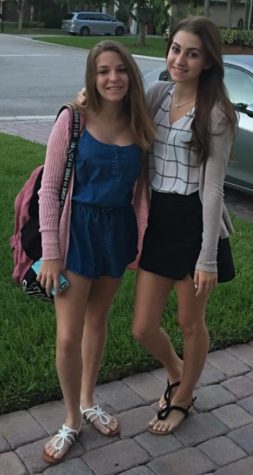
“The first thing I said was ‘I love you, mom,’” Smith said. “I didn’t really think how much that would scare her, but I just wanted to let it out.”
National media had basic details by then, and began publishing their developing reports. Panic soon reached Smith’s loved ones in Texas.
Back in Flower Mound
Senior Matt Morrow, Smith’s boyfriend, was in the computer lab when her name illuminated his screen. She said there was an active shooter in her school, that she was okay and she loved him.
He frantically began searching online for news updates. Typing in keywords like Fort Lauderdale, high school and shooter.
No results popped up until a Twitter notification finally appeared, stating there was “high activity around Stoneman Douglas High School” and warning people to be wary of the area.
“When I finally saw it, my heart just dropped,” Morrow said. “And that’s when I started freaking out and shaking.”
After that, the notifications and news reports that filled Morrow’s screen seemed constant and endless.
As the fourth period bell rang, Morrow excused himself from the beginning of class and found isolation inside a bathroom stall. Sobbing, he continued to text Smith and watched live feeds from outside MSD.
“You never imagine it to be your school,” Morrow said. “Or someone you’re close to’s school.”
A classmate eventually found Morrow and reminded him of the test he was missing. After explaining to his teacher what tragedy was taking place, he left school early.
At the same time, Smith’s best friend since 6th grade, senior Whitney McMahan was relaxing in anticipation for her Valentine’s Day date with her boyfriend, senior Dawson Lewis. Due to senior out, McMahan was preparing her gift and watching Netflix.
But it wasn’t long before she received the same active shooter Twitter notification Morrow had.
A few moments later Smith texted, and McMahan felt the same in-shock, unreal calm that Smith did. She wasn’t sad, she wasn’t crying.
It wasn’t until her boyfriend Lewis showed up that the emotions finally set in.
“You know that time when people ask if you’re okay, and you’re not? That’s when I…started bawling,” McMahan said. “I told him my best friend…Megan Smith almost died today—she could’ve been gone.”
Although they were miles apart, McMahan felt she had a responsibility to be there for Smith the rest of the day. She didn’t pry for details, but Smith kept repeating one thing:
“‘There was so much blood.’”
A SWAT team carefully inspected Smith’s classroom, ushering her and other bewildered classmates into the hallway. Telling them they were safe. They were going to be okay.
“At that moment,” Smith said. “It was the most relief I’ve ever felt in my life.”
They were instructed to keep their hands above their heads, walk in single file and to not look anywhere but at the back of the person in front of them.
“Of course, when they tell you something like that,” Smith said. “You want to look.”
Dark grey dust laced the freshman corridors. Glass crunched under the feet of tearful teens as they were directed toward safety. Smith saw streaks of blood, as if bodies had been dragged away from sight.
Further down the halls, she saw feet. Two or three young, dead bodies lay off to the side. As she neared the exit, another body was completely visible. She didn’t recognize the lifeless teen.
“I was in shock. I was crying. I was screaming,” Smith said. “I don’t even know what noises were coming out of my mouth.”
When Smith finally joined the world outside, she was awestruck by the amount of law enforcement surrounding the school. Helicopters, cameras and journalists littered the grounds with students and parents searching for the relief of an embrace. Something the families of the victims left on the hallway tile would never receive.
“There were parents and siblings, and they were all crying. I was so scared, I was like, ‘How many people were even dead in there?’” Smith said. “These parents may never see their kids again. They may be waiting for their kids, and they might not come out.”
Floridian best friend Kamensky and Smith decided to join their classmates and run away from campus, making the choice to find refuge in Kamensky’s home, a short distance from the school.
Smith called Morrow and McMahan, reassuring them that she was safe. She also called her mother, coordinating how to be picked up through the chaotic course of haphazard-parked cars and blockages.

For another hour, terror coursed through Smith’s veins until she finally received news that her sister Ambria wasn’t in the freshman building during the event. She was safe.
“She has four classes in that building and I have one,” Smith said. “I’m just glad it was me in there instead of her.”
The Aftermath, and #NeverAgain
Smith recalled her morning drive into the senior parking lot. At the entrance, Coach Aaron Feis, 37, would smile and wave at students, so they could start their day with a friendly face. Although Smith had never spoken to him, discovering he lost his life protecting students devastated her.
“It’s amazing that he died a hero, but it’s sad that he died so young,” Smith said. “He has a family and everything…It’s just crazy.”
Two of her Creative Writing classmates, Meadow Pollack and Joaquin Oliver, as well as several of Smith’s sister’s friends were also killed.
The world seemed different and frightful the days after. Smith threw away the outfit she’d worn and even suffered anxiety while in small crowds. She wanted to support her fellow classmates and remember those who’d been taken from them, but the memorials and vigils were hard to attend. She couldn’t shake the thought of another shooting taking place.
However, beneath the candles, the posters, pictures, rosaries, teddy bears and heart-shaped balloons covering the gates around Marjory Stoneman Douglas, a movement was rising.
Student’s immediately began speaking about their experiences, their beliefs and their suggestions for change. They’ve coined several hashtags such as #MSDStrong and #NeverAgain, with a goal to be the generation that ends school shootings and gun violence across America.
Although Smith is not at the forefront of the movement and prefers to stay out of the media as much as possible, she is still an advocate for their message.
“I want to make sure people know that you don’t want to go through this,” Smith said. “So you have got to help us make a change so you don’t ever have to.”
Even though she grew up comfortably around guns, her own beliefs altered after the shooting. She sees some possible solutions as more in-depth mental health background checks, armed security in school, a ban on assault rifles and access to juvenile criminal records.
Smith trusts that their movement will cause change because many of those involved can vote and will be voting for legislators that support their goals.
“We’re creating history and we’re creating something big,” Smith said. “And I think we really are going to change something.”
Even students who can’t vote are still doing their part to be informed and support the voices of their peers. They’re also encouraging adults to listen to what they have to say.
“Adults don’t like to listen to kids,” Smith said. “But we kind of know more than they do sometimes.”
The Parkland students are not the only ones who believe a change will come from this teenage activism. Both of Smith’s loved ones back in Texas, Morrow and McMahan, believe these teens will not stop until their goals are achieved, and they’re proud of Smith for rising up.
“They’re demanding to be heard and everyone’s coming together as one. They’re fighting this as one through personal experience,” McMahan said. “It’s sad that it’s taken this many shootings to get to it, but again, something’s…just different about this time. It’s sticking around.”
Panic attacks and isolation don’t plague Smith’s routine everyday anymore, but she still struggles with large crowds and sudden loud noises. All Smith wants is for her story to be told and for people to listen and realize these events aren’t as far away as they may seem.
“I just want people to know that it is personal. I wasn’t super popular. I didn’t know a lot of people, but people did know who I am,” Smith said. “For people to know someone who was a part of this, would make it more personal for them. And I want them to know that it was me. It was my life on the line.”
